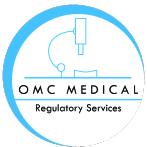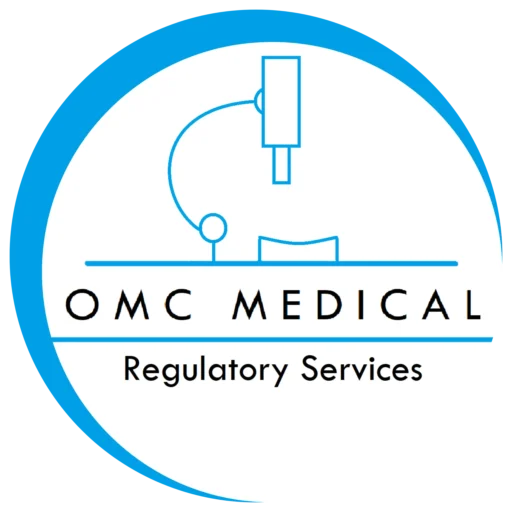Saudi Arabia Medical Device Registration
Understanding SFDA Medical Device Registration and Vigilant Post Market Surveillance System in Saudi Arabia
Regulatory Authority: Medical Device Sector, Saudi Food & Drug Authority
The Medical Devices Sector at the Saudi Food and Drug Authority is responsible for ensuring the safety, efficacy, and performance of medical devices under comprehensive legislation and regulation. The sector is aligned with international practices, chairing the Global Harmonization Working Party (GHWP), and actively participating in technical committees in IMDRF and ISO.
The regulation covers the entire lifecycle of medical devices, from idea to end-users, and monitors their performance and safe use. The sector performs regulatory activities such as reviewing technical files, clinical trials, post-market surveillance plans, and quality documents before granting marketing authorization. It also monitors approved devices using a risk-based approach, analyzes field safety notices, adverse events, and safety signals, and communicates effectively with healthcare providers.
The sector also oversees medical radiation emitting devices, medical radioactive material, and radiation protection at healthcare providers, ensuring compliance with SFDA regulatory requirements.
The sector manages a unique centre with the World Health Organization (Saudi FDA WHO-Collaboration Centre), providing international services in training, workshops, and active participation of SFDA experts.
Link for Regulatory Authority: https://www.sfda.gov.sa/
Medical Device Classification:
Means any instrument, apparatus, implement, machine, appliance, implant, in vitro reagent or calibrator, software, material or other similar or related
article:
A. Intended by the manufacturer to be used, alone or in combination, for human beings for one or more of the specific purposes(s) of:
- Intended by the manufacturer to be used, alone or in combination, for human beings for one or more of the specific purposes(s) of:
-Diagnosis, prevention, monitoring, treatment, or alleviation of disease,
-Diagnosis, monitoring, treatment, alleviation of or compensation for an injury or handicap,
-Investigation, replacement, modification, or support of the anatomy or of a physiological process,
-Supporting or sustaining life,
-Control of conception,
-Disinfection of medical devices,
-Providing information for medical or diagnostic purposes by means of in vitro examination of specimens derived from the human body; and
B. which does not achieve its primary intended action in or on the human body by pharmacological, immunological, or metabolic means, but which may be assisted in its intended function by such means.
Local regulation: Medical Device Interim Regulation
Link for Regulation: Not available
|
Class |
Risk | Example |
|
Class A |
Low |
Wound dressings, such as: Absorbent pads, Island dressings |
|
Class A – supplied sterile |
Low-medium | Personal protection kits |
|
Class A – incorporating a measuring function |
Low-medium |
Stethoscope |
|
Class A – reusable surgical instruments |
Low-medium |
Scalpels and scalpel handles, reamers, drill bits, scissors |
|
Class B |
Low-medium |
Tracheal tubes, Stents |
| Class C | Medium-high |
Lung ventilators, Incubators for babies |
| Class D | High |
Cardiovascular catheters, Carotid artery shunts |
Local Listing or Registration:
Registration in Saudi Arabia requires prior approval in one of the following reference markets: Australia, Canada, Europe, Japan, or the USA. Generally, medical device or IVD classification in the reference market will determine how the SFDA classifies the device.
An authorized representative (AR) must be appointed if the manufacturer does not have an office or entity in Saudi Arabia. The AR must have an authorized representative license, which is renewable on an annual basis, to legally represent manufacturers in the KSA.
The KSA Authorized Representative is also responsible for submitting all application documents to the SFDA to register the medical device.
Medical device listing:
Class A medical device excluding class As, class Am, class Ar can be authorized via medical device listing or medical device marketing authorization.
Language Requirements
Documentation and Labeling can be provided in Arabic.
Medical Device Marketing Authorization (MDMA):
Class B, class C, class D medical device can be authorized via medical device marketing authorization route.
Documents Required for Registration:
- Manufacturer and KSA Authorized Representative details
- Medical device information, such as intended use and labelling/instructions for use and all marketing materials
- Documents supporting your market authorization in the reference market (e.g., CE Certificate, 510(k) Letter, etc.)
- Proof of QMS compliance in your reference market
- Atttimeo Saudi regulations, and attestation of electrical compatibility (for active devices)
Device Registration Process:
Step 1: Appoint a Local Authorized Representative (LAR)
To begin the Saudi medical device registration process, manufacturers must appoint a Local Authorized Representative (LAR) in Saudi Arabia. The Local Authorized Representative (LAR) acts as the official liaison with the SFDA and ensures compliance with all regulatory requirements.
Key responsibilities include:
- Submitting the Medical Device Marketing Authorization (MDMA) application
- Communicating with the SFDA
- Managing post-market surveillance and regulatory compliance
The LAR must meet these qualifications:
- Comply with SFDA standards like SFDA.MD/GSO ISO 13485
- Maintain a physical presence in Saudi Arabia
- Hold a separate license for each establishment they represent
- Ensure exclusive representation for the specific device class or group
The Authorised Representative must follow the specific requirements listed in the SFDA guidance MDS-REQ 1 Requirements for Medical Device Marketing Authorization in Saudi Arabia.
Step 2: Classify Your Medical Device
Classification is a critical step in Saudi medical device registration. Devices are categorized into four risk classes: Class A (low risk), Class B, Class C, and Class D (high risk). The classification depends on:
- The intended use of the device
- Risk levels to patients and users
- Device invasiveness
- Duration of use
Consult the SFDA’s Risk Classification Rules for Medical Devices for guidance on the Saudi medical device registration. Accurate classification ensures a streamlined approval process.
Step 3: Prepare Technical Documentation
Comprehensive technical documentation is essential for SFDA medical device approval. For low-risk devices, the required documentation includes:
- Device description and specifications
- Instructions for Use (IFU)
- Essential principles checklist
- Risk management file
- Post-market surveillance plan
High-risk devices may require additional documentation, such as clinical data and detailed testing results. The SFDA reserves the right to request supplementary documents even after approval.
Step 4: Register and apply via the GHAD System
- The SFDA’s GHAD system is an online portal where manufacturers can:
- Register their medical device and company
- Submit the MDMA application
- Pay required fees
- Track the application’s progress
Ensure all documents are complete and accurate when submitting the “Application Form for Medical Devices Marketing Authorization” through the GHAD system to avoid delays.
Step 5: Pay SFDA Fees
Medical device registration fees in Saudi Arabia vary based on the classification of the device.
Step 6: Address SFDA Queries and Inspections
The SFDA may request additional information to ensure the safety and performance of the device. These requests could include:
- Clinical data
- Risk analyses
- Post-market surveillance reports
Inspections of manufacturing sites or product testing may also be required for high-risk devices. Prompt responses to SFDA inquiries are crucial to prevent approval delays.
Step 7: Obtain SFDA Medical Device Approval
After completing the review, the SFDA will issue an MDMA certificate in both Arabic and English, which is the SFDA medical device approval. This certificate authorises the marketing of your medical device in Saudi Arabia and includes:
- Manufacturer details
- Medical Device National Listing Numbers
- Device classification and intended use
- Certificate validity period
The MDMA certificate is typically valid for one year and can be renewed.
Language Requirements:
- Medical device documentation must be provided in English.
- Professional use medical devices labelling must be provided in English, while home use medical devices labelling must be provided in Arabic.
Reporting and investigating adverse events and complaints of medical devices:
General Requirements:
- Manufacturers, authorized representatives, and healthcare providers shall report to the NCMDR about any adverse events and complaints related to their medical devices and follow up investigation and provide the NCMDR with all documents and information.
- Manufacturers, authorized representatives, importers, and distributors shall establish a tracking system to record all information related to the supply and distribution of medical devices.
- Manufacturers, authorized representatives, importers, and distributors shall document and implement written work procedures to follow up incidents and adverse events of medical devices.
- Healthcare providers shall appoint a contact officer with the NCMDR.
Reporting Timeframe:
| Adverse Event | Timeframe to report |
| a serious public health threat | 2 days |
| a threat that may cause or contribute, directly or indirectly, in death or serious injury. | 10 days |
| any effect other than what is mentioned in the aforementioned items. | 30 days |
| When the NCMDR contacts manufacturers, authorized representatives, and healthcare providers for following up the investigation of incident, adverse event, or complaint, they shall response within 5 days | |
Required information and Documents:
- Manufacturers, authorized representatives, and healthcare providers shall provide the NCMDR with investigation reports, and technical documents and test reports related to the medical device associated with the adverse event based on the stage of investigation and the availability of information. Initial report shall include the information mentioned in the “MD Reporting From”.
- Manufacturers and authorized representatives shall submit complaints to the NCMDR. The “MD Complaints and Malfunctions Form” shows the data and information required to be available. Additional information, documents or procedures shall be provided when needed based on the progress of investigation and evaluation of the complaint.
- Investigation reports include:
-Initial Report: It contains the initial information about the medical device and the adverse event or complain. It includes the information mentioned in the “MD Reporting From” and shall be submitted to the NCMDR according to the aforementioned time frame.
-Follow-up Report: Contains additional information, investigation progress and actions taken. It shall be submitted if the investigation takes more than (30 days) with providing justification. SFDA shall assess the information provided and justification.
-Final Report: The last submitted report related to the adverse event or complaint. It contains all information and details, and the actions taken and final recommendations. It shall determine the type of corrective or preventive action taken by the manufacturer or the authorized representative, which subject to an evaluation by the SFDA
- Investigation conclusion and Final Report Submission
Investigation Timeline for submitting Final Report occurrence or awareness of adverse events or complaint that does not require testing or technical evaluation 15 days occurrence or awareness of adverse events or complaint that requires testing the device inside KSA. 30 days occurrence or awareness of adverse events or complaint that requires testing the device outside KSA. 60 days
Safety alerts and field safety corrective action (FSCA) for medical devices
Manufacturers and authorized representatives shall report the NCMDR any field safety corrective action (FSCA) or warnings affecting KSA and issued by the manufacturer or similar regulatory authorities outside the Kingdom.
Stages of Field Safety Corrective Action (FSCA):
- Stage One: Reporting FSCA to NCMDR or Receiving an Inquiry from SFDA
- Stage Two: Notifying the Affected Users
- Stage Three: FSCA Implementation Plan
- Stage Four: Implementing FSCA
- Stage Five: Closure
https://www.sfda.gov.sa/sites/default/files/2023-03/(MDS-REQ%2011)E_0.pdf
Who should make this communication:
- Manufacturer/Distributor
- Authorized Representative
When to make this communication:
Before placing a medical device into the Saudi Arabia market.
How OMC Medical can assist you with the process:
- Act as your Authorized representative
- Assist you with listing and authorization by filling in the form and registering the medical device with the GHAD.
Why Choose Us?
- Working towards client satisfaction
- Cost effective solutions
- Project completion before deadline
- Quality Regulatory affairs solutions
Contact us for free consultation: info@omcmedical.co.uk




